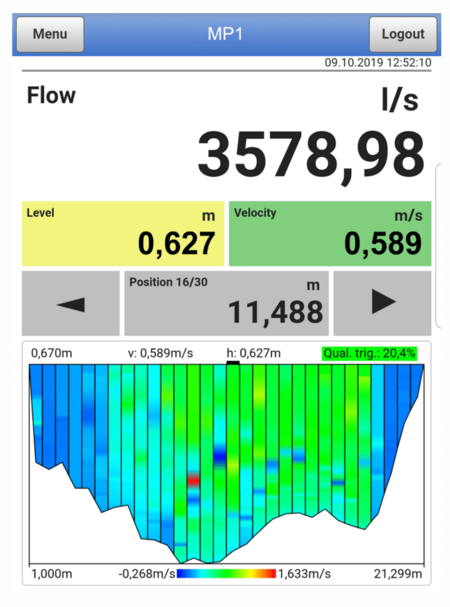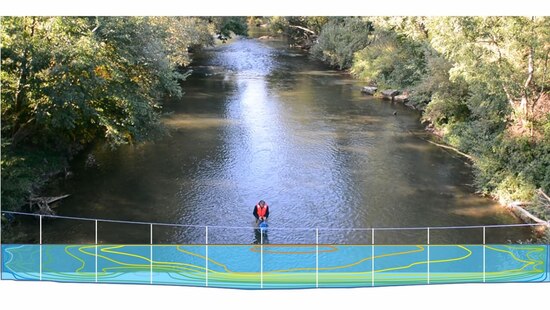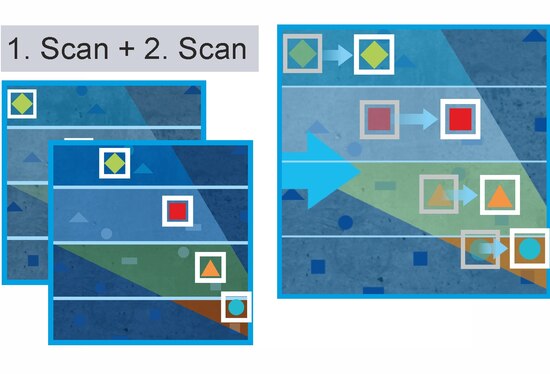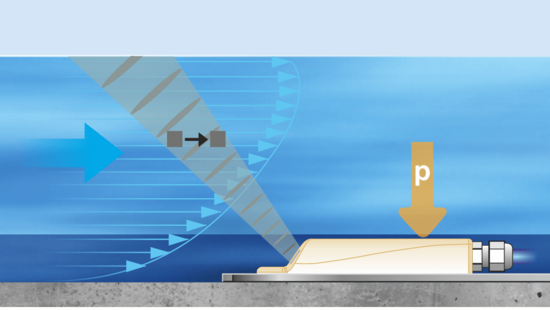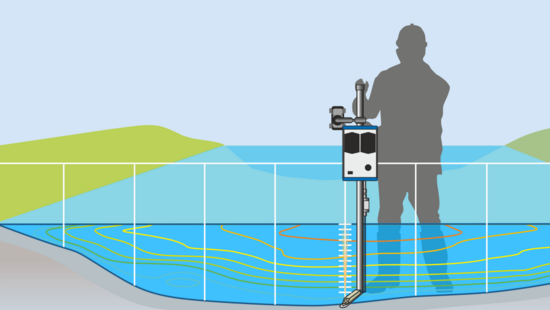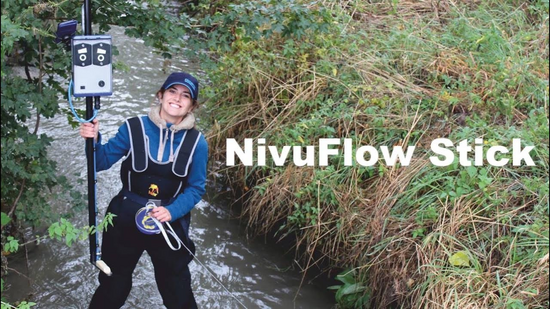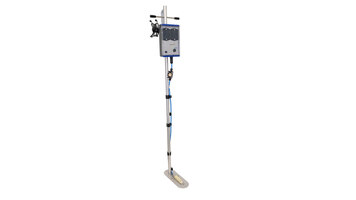
Discharge Measurement
River discharge refers to the volume of water passing through a river cross section in a unit of time. A classical method to estimate the river discharge in shallow waters is the wading with current meters.
To estimate the discharge, the river cross section is divided into several sub-sections, according to the selected number of verticals. The ISO 748/2021 proposes the minimum number of verticals according to the river width. In each vertical the water depth as well as velocities along the vertical are measured.
The discharge in each sub-section (partial discharge) is obtained by the multiplication of its area with the average water velocity. There are two main methods for the discharge calculation according to the ISO 748/2021: mean-section method and mid-section method.
Mean-Section Method
The mean-section method considers a sub-section as the area between two consecutive verticals. The flow (q) in each sub-section is calculated according to the formula below:

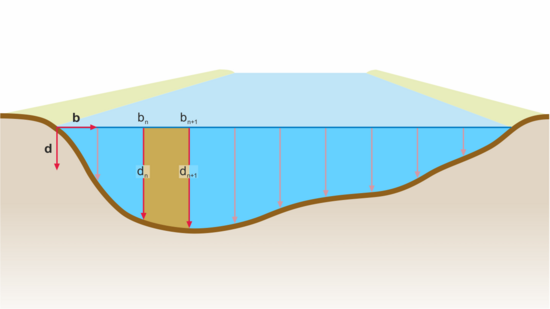
The river discharge (Q) will be the sum of all partial discharges.
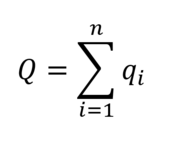
Mid-Section Method
In the mid-section method, each vertical corresponds to the centre of a sub-section. The flow (q) in each sub-section is calculated as shown below:

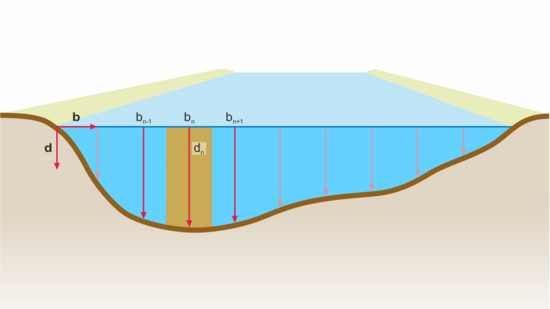
The river discharge (Q) will be the sum of all partial discharges.

Flow Velocity Measurement (v)
The flow velocity is measured through the ultrasonic cross correlation measurement principle. Thanks to this profiling technology, the sensor is capable of simultaneously measuring up to 16 velocities at different water depths. For each vertical there is only one measurement including all velocities. This brings a huge advantage in terms of measurement duration. There’s no need to move the sensor in different water depths. This multi-point measurement provides higher accuracy in determining the flow velocity curve compared to the single point measurement like propeller or electromagnetic current meters.
